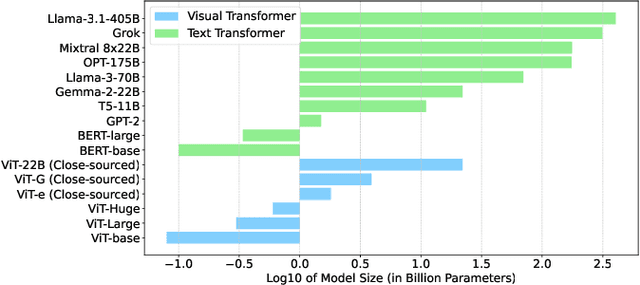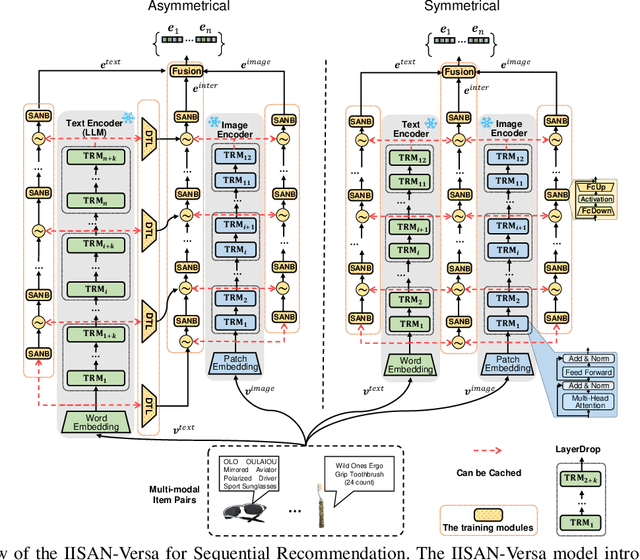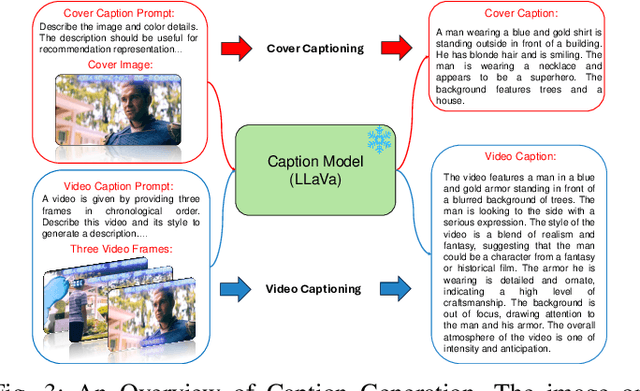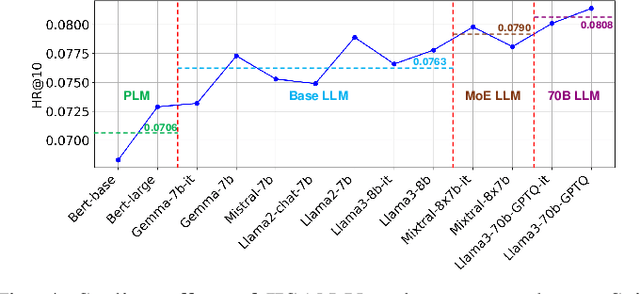Junchen Fu
Multimodal Representation Learning Techniques for Comprehensive Facial State Analysis
Apr 14, 2025Abstract:Multimodal foundation models have significantly improved feature representation by integrating information from multiple modalities, making them highly suitable for a broader set of applications. However, the exploration of multimodal facial representation for understanding perception has been limited. Understanding and analyzing facial states, such as Action Units (AUs) and emotions, require a comprehensive and robust framework that bridges visual and linguistic modalities. In this paper, we present a comprehensive pipeline for multimodal facial state analysis. First, we compile a new Multimodal Face Dataset (MFA) by generating detailed multilevel language descriptions of face, incorporating Action Unit (AU) and emotion descriptions, by leveraging GPT-4o. Second, we introduce a novel Multilevel Multimodal Face Foundation model (MF^2) tailored for Action Unit (AU) and emotion recognition. Our model incorporates comprehensive visual feature modeling at both local and global levels of face image, enhancing its ability to represent detailed facial appearances. This design aligns visual representations with structured AU and emotion descriptions, ensuring effective cross-modal integration. Third, we develop a Decoupled Fine-Tuning Network (DFN) that efficiently adapts MF^2 across various tasks and datasets. This approach not only reduces computational overhead but also broadens the applicability of the foundation model to diverse scenarios. Experimentation show superior performance for AU and emotion detection tasks.
* Accepted by ICME2025
CROSSAN: Towards Efficient and Effective Adaptation of Multiple Multimodal Foundation Models for Sequential Recommendation
Apr 14, 2025Abstract:Multimodal Foundation Models (MFMs) excel at representing diverse raw modalities (e.g., text, images, audio, videos, etc.). As recommender systems increasingly incorporate these modalities, leveraging MFMs to generate better representations has great potential. However, their application in sequential recommendation remains largely unexplored. This is primarily because mainstream adaptation methods, such as Fine-Tuning and even Parameter-Efficient Fine-Tuning (PEFT) techniques (e.g., Adapter and LoRA), incur high computational costs, especially when integrating multiple modality encoders, thus hindering research progress. As a result, it remains unclear whether we can efficiently and effectively adapt multiple (>2) MFMs for the sequential recommendation task. To address this, we propose a plug-and-play Cross-modal Side Adapter Network (CROSSAN). Leveraging the fully decoupled side adapter-based paradigm, CROSSAN achieves high efficiency while enabling cross-modal learning across diverse modalities. To optimize the final stage of multimodal fusion across diverse modalities, we adopt the Mixture of Modality Expert Fusion (MOMEF) mechanism. CROSSAN achieves superior performance on the public datasets for adapting four foundation models with raw modalities. Performance consistently improves as more MFMs are adapted. We will release our code and datasets to facilitate future research.
Video-Bench: Human-Aligned Video Generation Benchmark
Apr 07, 2025Abstract:Video generation assessment is essential for ensuring that generative models produce visually realistic, high-quality videos while aligning with human expectations. Current video generation benchmarks fall into two main categories: traditional benchmarks, which use metrics and embeddings to evaluate generated video quality across multiple dimensions but often lack alignment with human judgments; and large language model (LLM)-based benchmarks, though capable of human-like reasoning, are constrained by a limited understanding of video quality metrics and cross-modal consistency. To address these challenges and establish a benchmark that better aligns with human preferences, this paper introduces Video-Bench, a comprehensive benchmark featuring a rich prompt suite and extensive evaluation dimensions. This benchmark represents the first attempt to systematically leverage MLLMs across all dimensions relevant to video generation assessment in generative models. By incorporating few-shot scoring and chain-of-query techniques, Video-Bench provides a structured, scalable approach to generated video evaluation. Experiments on advanced models including Sora demonstrate that Video-Bench achieves superior alignment with human preferences across all dimensions. Moreover, in instances where our framework's assessments diverge from human evaluations, it consistently offers more objective and accurate insights, suggesting an even greater potential advantage over traditional human judgment.
LLMPopcorn: An Empirical Study of LLMs as Assistants for Popular Micro-video Generation
Feb 19, 2025Abstract:Popular Micro-videos, dominant on platforms like TikTok and YouTube, hold significant commercial value. The rise of high-quality AI-generated content has spurred interest in AI-driven micro-video creation. However, despite the advanced capabilities of large language models (LLMs) like ChatGPT and DeepSeek in text generation and reasoning, their potential to assist the creation of popular micro-videos remains largely unexplored. In this paper, we conduct an empirical study on LLM-assisted popular micro-video generation (LLMPopcorn). Specifically, we investigate the following research questions: (i) How can LLMs be effectively utilized to assist popular micro-video generation? (ii) To what extent can prompt-based enhancements optimize the LLM-generated content for higher popularity? (iii) How well do various LLMs and video generators perform in the popular micro-video generation task? By exploring these questions, we show that advanced LLMs like DeepSeek-V3 enable micro-video generation to achieve popularity comparable to human-created content. Prompt enhancements further boost popularity, and benchmarking highlights DeepSeek-V3 and DeepSeek-R1 among LLMs, while LTX-Video and HunyuanVideo lead in video generation. This pioneering work advances AI-assisted micro-video creation, uncovering new research opportunities. We will release the code and datasets to support future studies.
Efficient and Effective Adaptation of Multimodal Foundation Models in Sequential Recommendation
Nov 05, 2024



Abstract:Multimodal foundation models (MFMs) have revolutionized sequential recommender systems through advanced representation learning. While Parameter-efficient Fine-tuning (PEFT) is commonly used to adapt these models, studies often prioritize parameter efficiency, neglecting GPU memory and training speed. To address this, we introduced the IISAN framework, significantly enhancing efficiency. However, IISAN was limited to symmetrical MFMs and identical text and image encoders, preventing the use of state-of-the-art Large Language Models. To overcome this, we developed IISAN-Versa, a versatile plug-and-play architecture compatible with both symmetrical and asymmetrical MFMs. IISAN-Versa employs a Decoupled PEFT structure and utilizes both intra- and inter-modal adaptation. It effectively handles asymmetry through a simple yet effective combination of group layer-dropping and dimension transformation alignment. Our research demonstrates that IISAN-Versa effectively adapts large text encoders, and we further identify a scaling effect where larger encoders generally perform better. IISAN-Versa also demonstrates strong versatility in our defined multimodal scenarios, which include raw titles and captions generated from images and videos. Additionally, IISAN-Versa achieved state-of-the-art performance on the Microlens public benchmark. We will release our code and datasets to support future research.
Towards End-to-End Explainable Facial Action Unit Recognition via Vision-Language Joint Learning
Aug 01, 2024



Abstract:Facial action units (AUs), as defined in the Facial Action Coding System (FACS), have received significant research interest owing to their diverse range of applications in facial state analysis. Current mainstream FAU recognition models have a notable limitation, i.e., focusing only on the accuracy of AU recognition and overlooking explanations of corresponding AU states. In this paper, we propose an end-to-end Vision-Language joint learning network for explainable FAU recognition (termed VL-FAU), which aims to reinforce AU representation capability and language interpretability through the integration of joint multimodal tasks. Specifically, VL-FAU brings together language models to generate fine-grained local muscle descriptions and distinguishable global face description when optimising FAU recognition. Through this, the global facial representation and its local AU representations will achieve higher distinguishability among different AUs and different subjects. In addition, multi-level AU representation learning is utilised to improve AU individual attention-aware representation capabilities based on multi-scale combined facial stem feature. Extensive experiments on DISFA and BP4D AU datasets show that the proposed approach achieves superior performance over the state-of-the-art methods on most of the metrics. In addition, compared with mainstream FAU recognition methods, VL-FAU can provide local- and global-level interpretability language descriptions with the AUs' predictions.
* 10 pages, 5 figures, 4 tables
IISAN: Efficiently Adapting Multimodal Representation for Sequential Recommendation with Decoupled PEFT
Apr 11, 2024Abstract:Multimodal foundation models are transformative in sequential recommender systems, leveraging powerful representation learning capabilities. While Parameter-efficient Fine-tuning (PEFT) is commonly used to adapt foundation models for recommendation tasks, most research prioritizes parameter efficiency, often overlooking critical factors like GPU memory efficiency and training speed. Addressing this gap, our paper introduces IISAN (Intra- and Inter-modal Side Adapted Network for Multimodal Representation), a simple plug-and-play architecture using a Decoupled PEFT structure and exploiting both intra- and inter-modal adaptation. IISAN matches the performance of full fine-tuning (FFT) and state-of-the-art PEFT. More importantly, it significantly reduces GPU memory usage - from 47GB to just 3GB for multimodal sequential recommendation tasks. Additionally, it accelerates training time per epoch from 443s to 22s compared to FFT. This is also a notable improvement over the Adapter and LoRA, which require 37-39 GB GPU memory and 350-380 seconds per epoch for training. Furthermore, we propose a new composite efficiency metric, TPME (Training-time, Parameter, and GPU Memory Efficiency) to alleviate the prevalent misconception that "parameter efficiency represents overall efficiency". TPME provides more comprehensive insights into practical efficiency comparisons between different methods. Besides, we give an accessible efficiency analysis of all PEFT and FFT approaches, which demonstrate the superiority of IISAN. We release our codes and other materials at https://github.com/GAIR-Lab/IISAN.
An Empirical Study of Training ID-Agnostic Multi-modal Sequential Recommenders
Mar 30, 2024Abstract:Sequential Recommendation (SR) aims to predict future user-item interactions based on historical interactions. While many SR approaches concentrate on user IDs and item IDs, the human perception of the world through multi-modal signals, like text and images, has inspired researchers to delve into constructing SR from multi-modal information without using IDs. However, the complexity of multi-modal learning manifests in diverse feature extractors, fusion methods, and pre-trained models. Consequently, designing a simple and universal \textbf{M}ulti-\textbf{M}odal \textbf{S}equential \textbf{R}ecommendation (\textbf{MMSR}) framework remains a formidable challenge. We systematically summarize the existing multi-modal related SR methods and distill the essence into four core components: visual encoder, text encoder, multimodal fusion module, and sequential architecture. Along these dimensions, we dissect the model designs, and answer the following sub-questions: First, we explore how to construct MMSR from scratch, ensuring its performance either on par with or exceeds existing SR methods without complex techniques. Second, we examine if MMSR can benefit from existing multi-modal pre-training paradigms. Third, we assess MMSR's capability in tackling common challenges like cold start and domain transferring. Our experiment results across four real-world recommendation scenarios demonstrate the great potential ID-agnostic multi-modal sequential recommendation. Our framework can be found at: https://github.com/MMSR23/MMSR.
A Content-Driven Micro-Video Recommendation Dataset at Scale
Sep 27, 2023



Abstract:Micro-videos have recently gained immense popularity, sparking critical research in micro-video recommendation with significant implications for the entertainment, advertising, and e-commerce industries. However, the lack of large-scale public micro-video datasets poses a major challenge for developing effective recommender systems. To address this challenge, we introduce a very large micro-video recommendation dataset, named "MicroLens", consisting of one billion user-item interaction behaviors, 34 million users, and one million micro-videos. This dataset also contains various raw modality information about videos, including titles, cover images, audio, and full-length videos. MicroLens serves as a benchmark for content-driven micro-video recommendation, enabling researchers to utilize various modalities of video information for recommendation, rather than relying solely on item IDs or off-the-shelf video features extracted from a pre-trained network. Our benchmarking of multiple recommender models and video encoders on MicroLens has yielded valuable insights into the performance of micro-video recommendation. We believe that this dataset will not only benefit the recommender system community but also promote the development of the video understanding field. Our datasets and code are available at https://github.com/westlake-repl/MicroLens.
NineRec: A Benchmark Dataset Suite for Evaluating Transferable Recommendation
Sep 20, 2023



Abstract:Learning a recommender system model from an item's raw modality features (such as image, text, audio, etc.), called MoRec, has attracted growing interest recently. One key advantage of MoRec is that it can easily benefit from advances in other fields, such as natural language processing (NLP) and computer vision (CV). Moreover, it naturally supports transfer learning across different systems through modality features, known as transferable recommender systems, or TransRec. However, so far, TransRec has made little progress, compared to groundbreaking foundation models in the fields of NLP and CV. The lack of large-scale, high-quality recommendation datasets poses a major obstacle. To this end, we introduce NineRec, a TransRec dataset suite that includes a large-scale source domain recommendation dataset and nine diverse target domain recommendation datasets. Each item in NineRec is represented by a text description and a high-resolution cover image. With NineRec, we can implement TransRec models in an end-to-end training manner instead of using pre-extracted invariant features. We conduct a benchmark study and empirical analysis of TransRec using NineRec, and our findings provide several valuable insights. To support further research, we make our code, datasets, benchmarks, and leaderboards publicly available at https://github.com/westlake-repl/NineRec.
 Add to Chrome
Add to Chrome Add to Firefox
Add to Firefox Add to Edge
Add to Edge